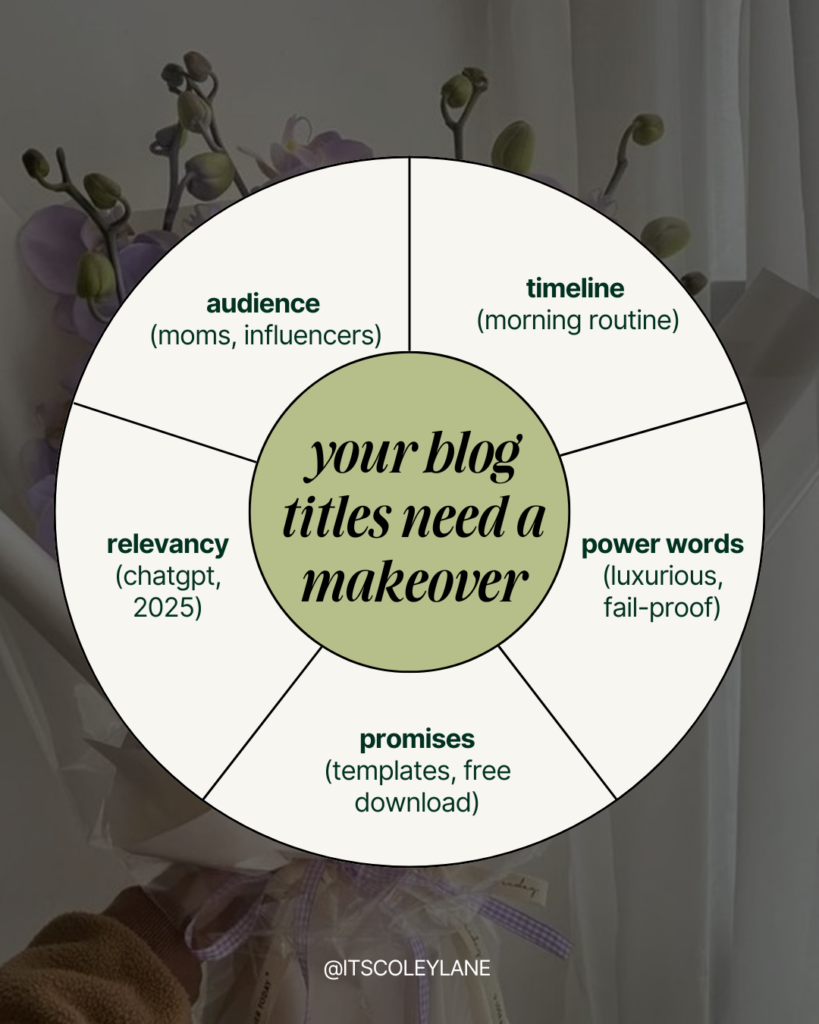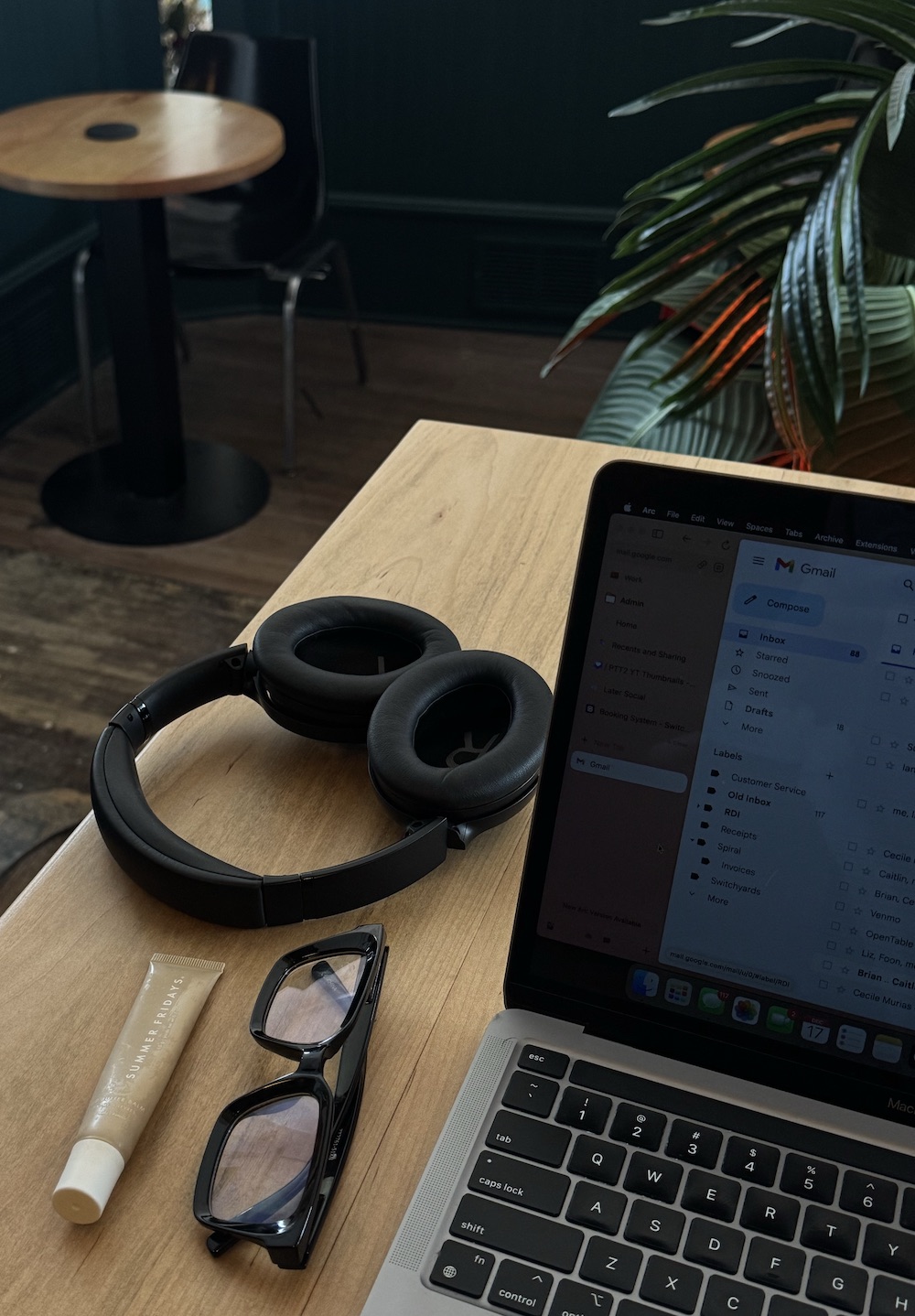Time to upgrade your blog titles from “meh” to “OMG, I need to read this.”
Blogging can feel like shouting into a void if no one’s clicking through to actually read what you’ve written.
You spend time, energy, and heart creating valuable content, so why not give it a title that hooks readers instantly?
Let’s unpack the essentials to turn your blog titles from basic to can’t-miss, with five simple tweaks that can make all the difference. From knowing your audience to adding power words, this is your go-to guide for giving every blog title a fresh, attention-grabbing edge.

1. Know Your Audience
A great title speaks directly to the person you’re trying to reach. It’s not just about what your post is about but who it’s for. The more specific you can get, the better. When a reader sees themselves in a headline, it feels like the post was made for them—and they’re much more likely to click.
Think about the different types of readers who might benefit from your content. If you’re writing for a niche audience, like small business owners, freelancers, or creative entrepreneurs, make sure your title reflects their unique challenges or goals.
Address their specific needs directly in your titles to make your post feel personal and relevant. This kind of tailored language builds instant connection, making your audience feel seen and understood right from the headline.
- Example Makeover: Instead of “How To Manage Your Time,” try “5 Time-Saving Hacks Every Busy Business Owner Needs This Week” or “10 Time Saving Business Tools For Starting A Business”
Why It Works: You’re addressing a specific reader (business owners, creatives) and offering them something that solves a real pain point, like time management or budgeting. This makes the title feel more personal and useful, which boosts your chances of that coveted click.
2. Add a Timeline
Quick wins are universally appealing. Most people are drawn to content that promises immediate results or insights they can use right away. Adding a timeline to your title is one of the simplest ways to make your post feel more actionable and relevant. Can you help readers achieve a result “in 5 days,” “in 30 minutes,” or “this month”?
This also helps to set clear expectations, which readers appreciate. They know that your post isn’t just a general discussion but will actually give them something concrete they can work with. A clear timeline can create a sense of urgency without coming off as clickbait—just be sure to keep your promise and deliver results in the timeframe you set.
- Example Makeover: Instead of “How to Build a Morning Routine,” try “Build Your Perfect Morning Routine in 7 Days (No Early Alarms Required).”
Why It Works: Adding “in 7 days” makes it feel doable and realistic. It promises a manageable process rather than an intimidating overhaul. Plus, you’ve set the expectation that it doesn’t involve drastic changes, which can be appealing to readers who want results without a major disruption.

3. Highlight Relevance
In a sea of content, your post has to give readers a reason to click now, not later. This is where urgency comes into play. Why should they make time for your post today? By highlighting relevance, you make your post feel like it’s meeting them right where they are. Think about keywords that are current, seasonal topics, or emerging trends.
Adding a time-bound hook, such as mentioning a specific year or tying in with recent events, can work wonders here. Consider what’s top-of-mind for your readers and reflect that in your titles. This could be as simple as mentioning an upcoming holiday or tapping into current industry buzzwords.
- Example Makeover: Instead of “Tips for Boosting Productivity,” try “Get Ready for 2025: 10 Game-Changing Productivity Strategies You Can Start Right Now.”
Why It Works: Referencing 2025 makes it feel relevant to what’s coming next and positions your post as future-forward, signaling to readers that it will help them stay ahead of the curve. This kind of relevancy creates a sense of urgency, as readers feel the need to prepare now rather than risk falling behind.
4. Use Some Power Words
Words have weight. Titles that use high-energy words stand out because they convey a sense of importance or excitement. Words like “ultimate,” “essential,” “luxurious,” or “fail-proof” add energy and immediacy to your headline, turning it from a passive description to an active invitation.
When choosing power words, think about the feeling you want to evoke. Are you aiming for a sense of exclusivity, urgency, or reassurance? Different words carry different tones, so pick the ones that match your brand voice and purpose. These words help set your post apart from generic content and make readers feel they’re getting something extra valuable.
- Example Makeover: Instead of “How to Organize Your Closet,” try “The Ultimate Closet Organization Guide: Fail-Proof Tips for a Space You’ll Love.”
Why It Works: Words like “ultimate” and “fail-proof” make the title feel more authoritative and trustworthy, signaling that readers can expect high-quality advice. This is particularly important if you’re offering guidance or “how-to” content—your headline needs to assure readers they’ll find reliable, worthwhile insights.
5. Make a Promise
Your title should hint at the value your blog is going to deliver. Specifics matter here, so spell out what readers will gain by clicking. Are you sharing a free template? Outlining a step-by-step guide? Offering insider tips? Letting readers know exactly what’s in store makes them more likely to click because they understand the tangible benefit up front.
Consider what “extra” you can offer, whether it’s a resource, insider knowledge, or a clear, step-by-step approach. The more you can demonstrate that your post holds real value, the easier it is to draw readers in. Just be sure to deliver on what your headline promises to keep their trust intact.
- Example Makeover: Instead of “Tips for Creating a Budget,” try “Create a Stress-Free Budget in 5 Simple Steps (Includes Free Template).”
Why It Works: By including “free template” in the title, you’re providing an additional incentive that sets your post apart from others on the same topic. Readers know they’re not just getting generic advice—they’re getting a practical tool that they can use right away.








Comments +